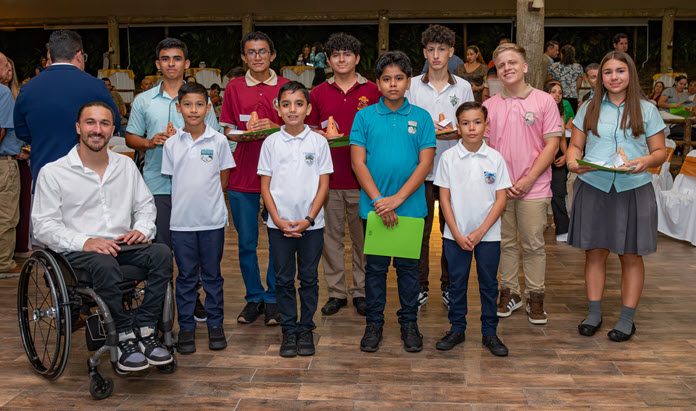Nature sustains us. It is our home, our culture, our sense of self, and our food source. That is the relationship that Bribri people have with nature.
We come from nature, and to nature we will return. This has been the case since the beginning of our history. Non-Bribri societies then invented their laws and ways of life and we have been adapting to that—always from the truth of who we are, where we come from, and what we have come for. The historical importance of the bond between us and nature is our inalienable commitment to life.
To take care of nature, we Bribri first observe it. Next, we respect and maintain it just as it was given to us, because only then will it give us everything we need. We do this by ensuring that our activities do not alter it: for example, we grow crops without chemicals, we maintain life through agroforestry or through crop association and rotation. In this way, we promote life and abundance, sharing and giving. We take care not to alter nature, so we do not allow electrical installations, or any roads or paths that alter natural dynamics or vibrations. Nature is not only the home and source for us. It is also the home and source of many other forms of life.

This relationship of respect and care for nature has a direct impact on producing more life. We see how this happens when we look at our soil, in our forest, in the presence of the other lives it sustains, and even in the presence of life in the waters of the Scui, which bathes our lands—a tributary of the Yorkin River that divides Costa Rica and Panama. There are still species recorded there that are extinct in other rivers because they have been altered by the use of agrochemicals.
Our wish is that non-Bribri people can learn to recognize themselves as part of the whole and from there understand the logic of life, as we Bribri do.
Only then will we all do our part. We are all integrated and if one part does not contribute, the cycle is broken. If that cycle is broken, it will affect all living beings that inhabit the earth. It is important to maintain the balance that maintains the flow of life and thus bring more life to the rivers, to the forests, to our being.
We want many people to know that there are ways to contribute to the balance of life, just as we do —with our gaze fixed on nature, and with economic activities that do not contradict nature. We grow without chemicals, without altering the microbiology of the soil that contributes to the development of plants and mineralization of their fruits that we later eat. Without altering the life of the soil, which is the first link in the food chain. Without altering the flow of life and without altering the vibration that it occupies in space-time.
You who read our words today can support our work and give it value by helping it grow. You can do so by visiting us, or by contributing to the sustainability of our food sovereignty project that we will re-launch in June 2020. This project allowed us to buy animals such as goats and chickens for self-consumption, to forage, and to set up enclosures and orchards. The next step is to obtain machinery that will allow us to market our crops and produce organic banana flour, organic rice, and other products.

The Asociación Stibrawpa was created in 1992 by three indigenous Bribri women from the Yorkín community, on the border between Costa Rica and Panama. They wanted to save their traditions and their territory. Since then, the association has grown, and today it has 54 associates who protect the rainforest that they share with visitors. Tourism has generated employment and economic income for Yorkin, but the association’s work has also made it possible to reclaim agroecological and agroforestry practices that are an intrinsic part of Bribri culture and identity. To learn how to coordinate a visit or donate to the association, we invite you to visit their Facebook page. You can also donate to the association through their page at Amigos of Costa Rica, a U.S. entity that represents more than 100 nonprofit organizations in Costa Rica.





